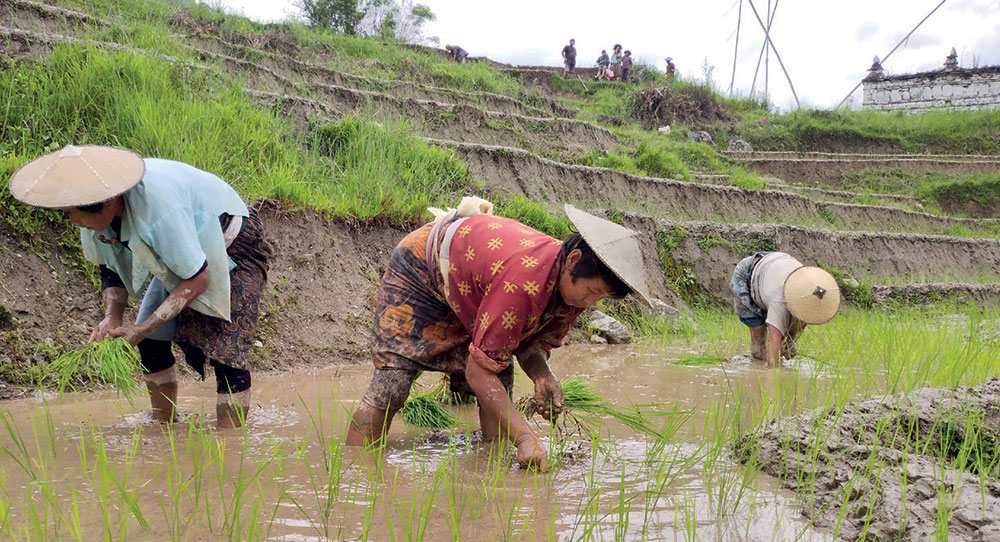Vegetable and fruits however saw a slight increase in production
YK Poudel
The production of major cereals in the country decreased last year, according to the Integrated Agriculture and Livestock Census 2023 released by the National Statistics Bureau yesterday.
Bhutan recorded approximately 69,008 agricultural holdings, comprising 66,440 family farms and 2,568 commercial farms. This marks an increase from 67,093 agricultural holdings in 2022.
The total production of major cereals in 2023 was 68,786 metric tonnes (MT), a two-percent decline from the previous year’s 70,168 MT.
The number of growers also dropped from 22,138 individuals in 2022 to 21,891 in 2023.
Punakha, Paro, and Wangdue were the top dzongkhags in cereal production, collectively contributing 30 percent of the total. Punakha alone produced 7,971 MT of cereals.
Paddy production last year included 40,563 MT of irrigated paddy and 241 MT of upland paddy, recording marginal declines of 0.5 percent and 0.2 percent, respectively, compared to 2022.
Punakha Dzongkhag harvested 7,761 MT of irrigated paddy despite a slight decrease from the previous year. Paro Dzongkhag increased its irrigated paddy production to 7,024 MT, up by 820 MT from 2022, while Wangdue recorded a slight decrease with 4,449 MT.
Maize production is mostly concentrated in dzongkhags like Trashigang, Mongar, Pemagatshel, and Tsirang.
The country also produced 965.51 MT of buckwheat, 837.01 MT of wheat, 530.26 MT of millet, 518.13 MT of barley, and 12.87 MT of quinoa.
Farmers in Bhutan cultivate a variety of vegetables, with pumpkins, squash and gourds, cabbage, cauliflower, chili, broccoli, and beans being the most viable across the country. Last year, about 26,825 MT of vegetables were produced, a slight increase from 26,726 MT in 2022.
Under the category of oilseeds and pulses, mustard and soybeans were predominant. Production increased to 1,092.21 MT in 2023, up from 1,012.81 MT in 2022, which is mainly attributed to an increase in the harvest area.
Globally, the production of oilseeds has grown due to improvements in farming techniques and modern technology.
In Bhutan, potato, cassava and ground apple are the main roots and tubers. A total of 38,327 MT of roots and tuber was produced in 2023 – an increase of 6,768 MT from 2022. Wangude, Paro and Chukha dzongkhags were the dominant roots and tuber producers.
Bhutan produces a wide range of fruits and nuts. About 42,780 MT of fruits were harvested in 2023. Of this, 34,895 MT were major fruits such as apples, mandarins, and areca nuts, while 84 MT were newly promoted fruits like watermelon, kiwi, and dragon fruit.
Among the dzongkhags, Paro ranked first in apple production, followed by Thimphu, Haa, and Bumthang. Samtse, Sarpang, and Dagana dominated areca nut production. Meanwhile, Dagana, Tsirang, Zhemgang, and six other dzongkhags led in mandarin production.


